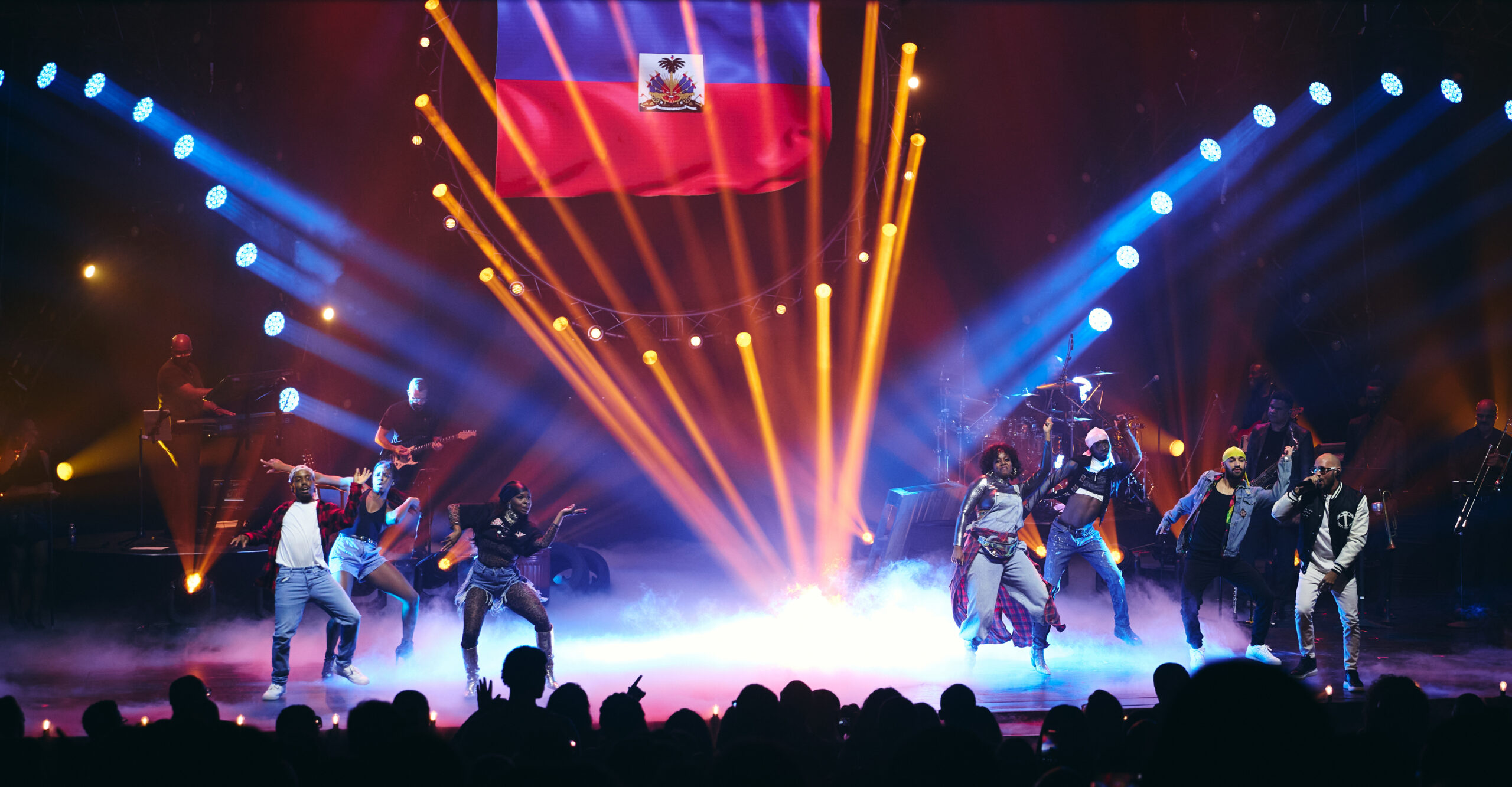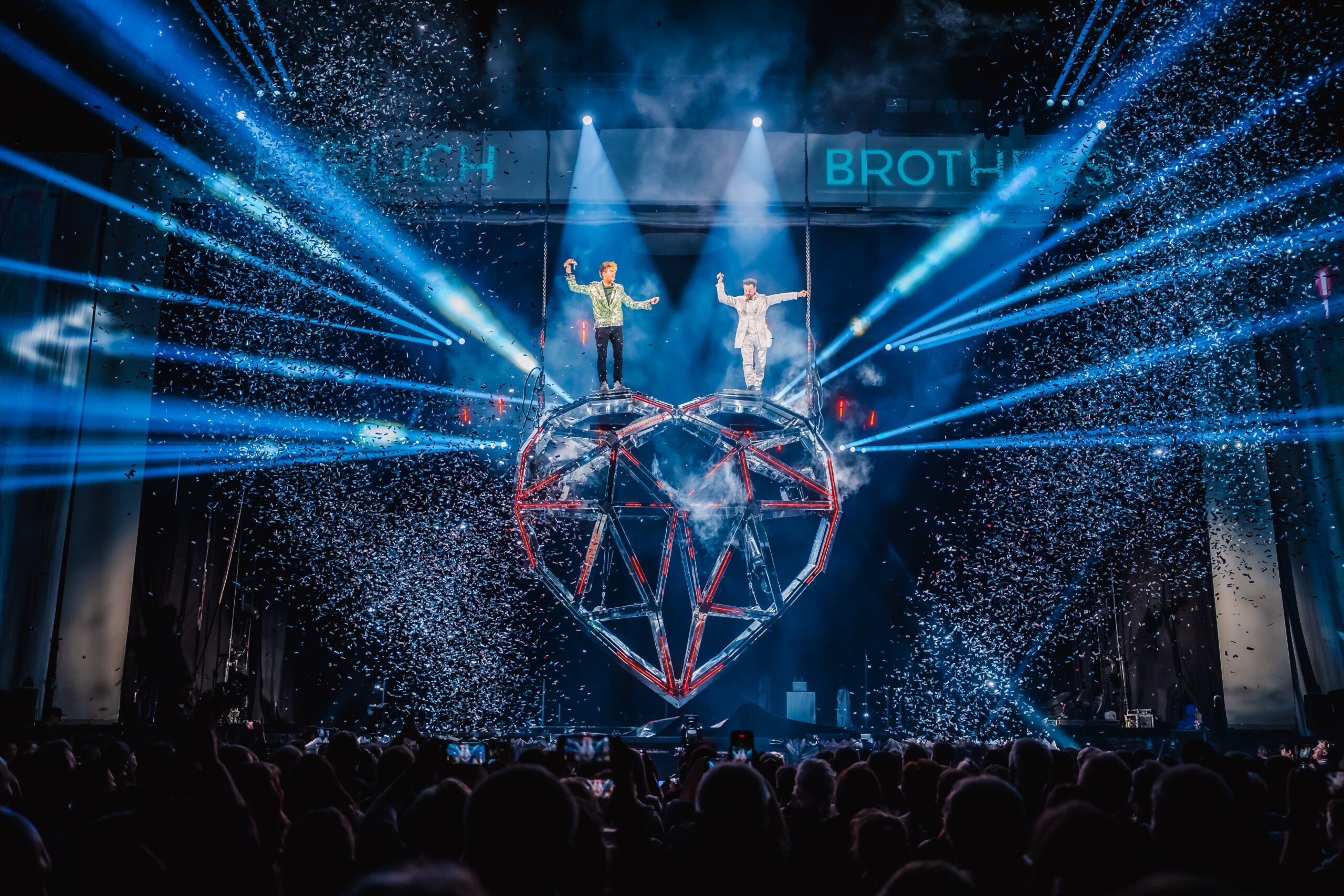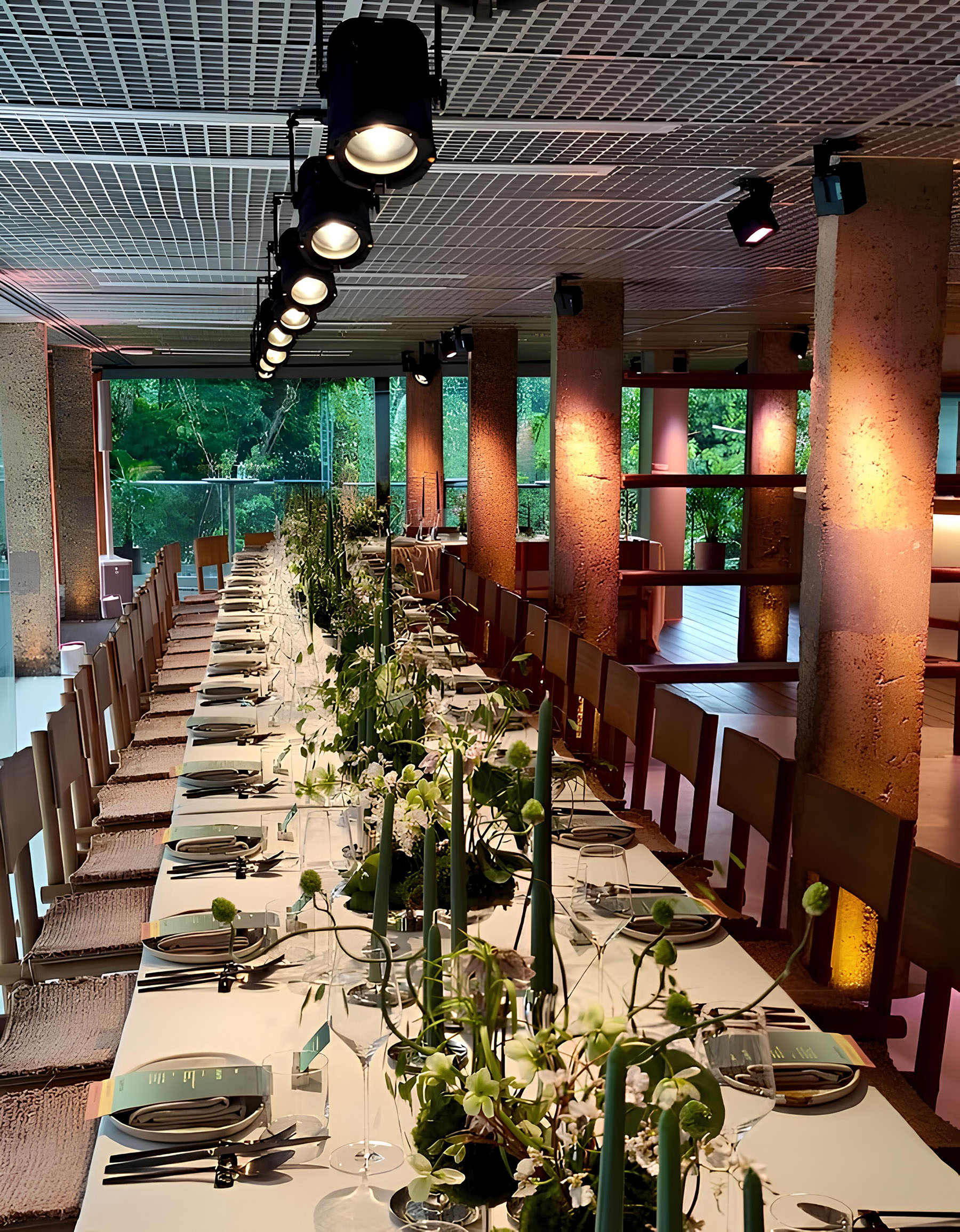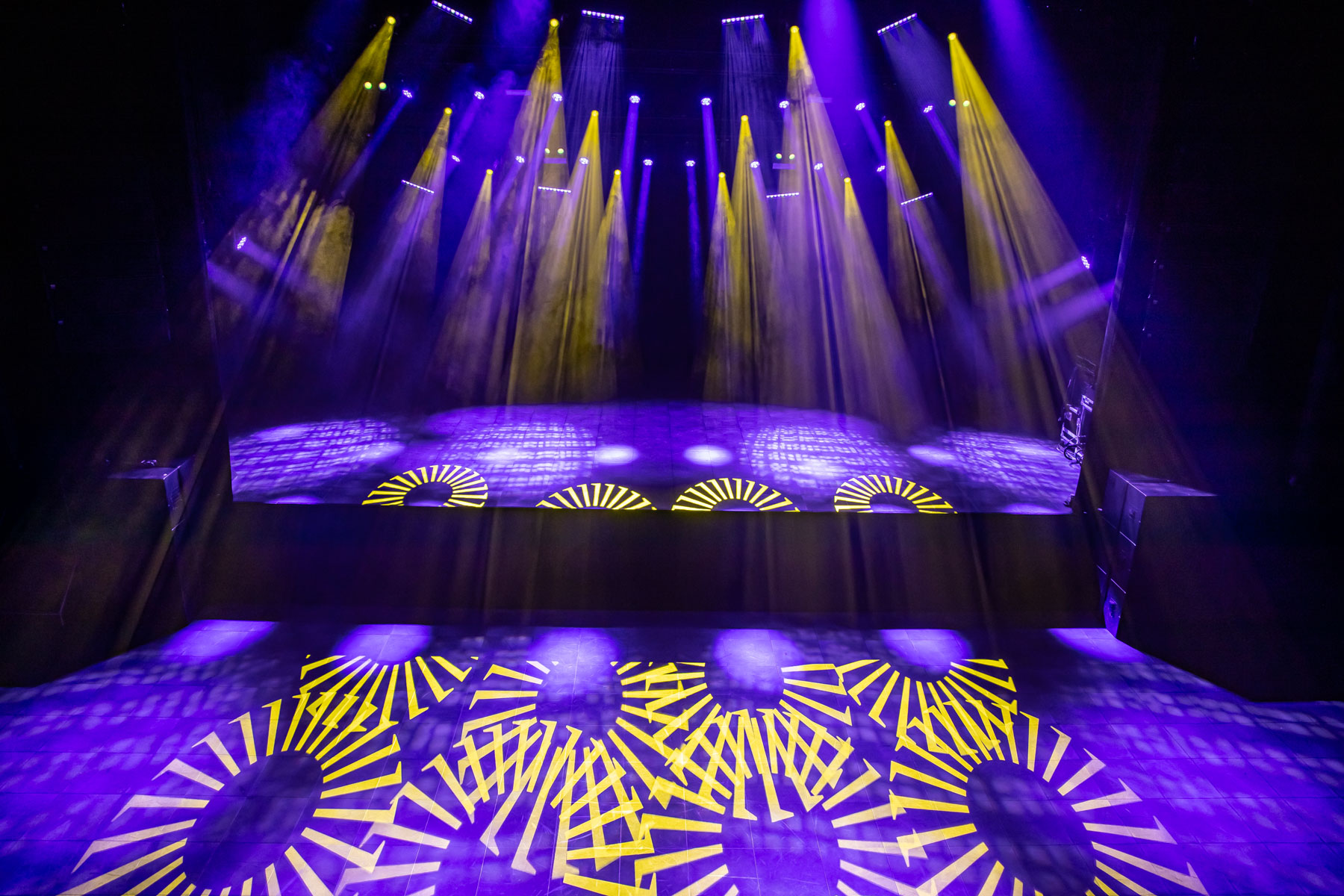DUSSELDORF, Germany — The semi-finals and finals competition for the 56th annual Eurovision Song Contest, broadcast from Düsseldorf Arena May 10, 12 and 14, was seen by 200 million via TV and Internet. LD Jerry Appelt used more than 2,100 moving lights and more than five miles of truss. The total fixture count — 5,638 — also set a record, as did the total load — 280 tons of gear.
To light the 2011 competition’s 43 songs, plus three interval acts and an opening to the Final, which took place before a live audience of 36,000, Appelt’s rig covered every square meter of the arena. Fixtures were hung on a moving truss structure that consisting of three graduated rings measuring 10, 16 and 30 meters in diameter, centered about 20 meters above the stage. The rings held 35 Clay Paky Alpha Wash 1500s, 16 Alpha Beam 1500s and eight Alpha Profile 1500 fixtures.
The 26 moving truss sections were arranged like spokes from the center rings. These truss sections held an additional 28 Alpha Wash 1500 and 36 Alpha Beam 1500s with four shorter truss sections holding 24 Alpha Spot 700 HPE fixtures.
At floor level, both behind the stage and on each side, there were 24 Alpha Beam 1500 fixtures, and 25 Clay Paky Sharpy fixtures were placed on the floor surrounding the front of the stage, specified for only one song – sung by last year’s winner, Lena Meyer-Landrut of Germany. “I wanted a very special look for Lena,” Appelt said.
Additional truss spanning the ceiling from the rings to the perimeter of the arena held 35 Alpha Profile 1500 and 42 Alpha Spot 1500 HPE fixtures. Finally, the top perimeter of the arena was home to an additional 50 Alpha Spot 1500 HPE fixtures.
“The design included a variety of Clay Paky fixtures that could combine to create so many fantastic looks,” said Appelt. And I know the color will match perfectly.” He also credited the brand for “brilliant light,” fast movement and reliability, noting the versatility of the Alpha Spot 1500 HPEs and the power of the Alpha Beam 1500s, which he positioned on the floor around the stage. “The arena was huge, and it was needed. I’d be very happy to have an all Clay Paky rig.”
Followspots included six Robert Juliat Aramis 2500W HMI DMX main spots on the platform, five Robert Juliat Victor 1800W HMI as back followspots on truss seats and four Robert Juliat Lancelot 4000W HMI followspots on the balcony. Lighting was supported with 48 ETC 750W Source 4 10° fixtures.
Cape Cross of Köln, Germany provided all lighting and rigging for the show, sending 90 trailer trucks, each with 40 tons of equipment. Thomas Brügge, managing director of Cape Cross said of the Clay Paky fixtures, “They’re quite amazing – the light is brilliant and they’re so fast. But very important to us is the reliability. The maintenance is fantastic.”
Concert and Stage Producer Ola Melzig worked closely with the delegations and artists during initial preparations and rehearsals for the show. Melzig said, “The feedback regarding the lighting was consistently one of amazement – everyone was extremely happy with Jerry’s work and the brightness and quality of the lighting. They were also pleased with the unique look of each song. No one wants to look like the next. I personally think the Clay Paky lights were a fantastic choice and the crew was really happy with the low maintenance.”
Lighting control came from four grandMA2 full size consoles running on timecode, each with full backup, and five grandMA2 faderwings ran all lighting and video, triggered via timecode. Eleven MA NPU (Network Processing Unit) devices handled all traffic in one session on the MA-Net2. “It’s not even practical to do a show like this without timecode and grandMA2 is the best,” said Appelt, “Absolutely every millisecond is cued and then rehearsed, again and again and again. There is no room for an error in a show of this size. The MA system delivered a great result.”
Four operators ran the desks: one for video, one for effect light, one for white light and one for audience and green room. Pre-programming began in Hamburg at NDR from March 21 through April 8, 2011 with the grandMA 3D running on four custom built Cape Cross PCs. The team built moving paths for all moving trusses in grandMA 3D to show the exact positions of the lights in each song. Programming took place in Düsseldorf April 11-15 In total there were 70 patched universes and 2,921 cues. Four custom-built Cape Cross Media PCs ran the grandMA 3D system for previsualization.
Appelt, Melzig and Cape Cross were brought in by Brainpool, led by producer Jörg Grabosch. Brainpool was hired by host broadcaster NDR to handle the creative production of this year’s Eurovision, including staging, lighting, pyro, hosts, viewing room, technical crew, etc.
“This was one of the smoothest Eurovision productions I’ve experienced,” said Melzig, “and it was the biggest. Every aspect of the show was chosen and executed to its fullest potential, and it showed.”
After all the votes were tallied, Azerbaijan was crowned champion with the song “Running Scared”, which means Eurovision will be held in Baku, Azerbaijan in 2012.
Eurovision Song Contest 2011
Crew
Lighting Designer: Jerry Appelt
FOH: Matthias Rau, Matthias Hagel, Wolfgang Nöhrer, Sascha Matthes, Markus Ruhnke, Matze Meyert, Michael Giegerich
Stage Design: Florian Weider
Host broadcaster: NDR
Executive Producer: Thomas Schreiber
Executive Supervisor of EBU: Jon-Ola Sand
For more information, please visit www.claypaky.it, www.malighting.com and www.eurovision.tv.









